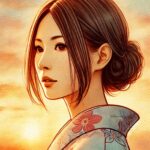The World’s Leading Jellyfish Aquarium: A Graceful and Educational Experience. How to Get There and Highlights

On a hot summer day, don’t you prefer to visit a cool aquarium rather than outdoor activities like going to the zoo? In Tsuruoka City, Yamagata Prefecture, there is a unique aquarium specializing in jellyfish, featuring 80 species gracefully floating in the water.
I visited Kamo Aquarium, also known as the Jellyfish Dream Museum. This article will explain how to get there and the attractions it offers.

How to Get to Kamo Aquarium
By Car
Since, Kamo Aquarium is located along the coast, making a car would be better to transport. It takes about 30 minutes to get there from Tsuruoka Station.
Address: 997-1206 Yamagata Prefecture, Tsuruoka City Imaizumi Okubo 657-1, JAPAN
Buy Bus
However, the most common way for travelers visiting Kamo Aquarium is bus. Be sure to check the timetable as there are few buses available. Not all buses at Platform 2 stop at Kamo Aquarium. Make sure to check if the bus stops at Kamo Aquarium before boarding.

BUS TIMETABLE Shonai Kotsu Website
Tsuruoka Ekimae Bus Stop No.2 ↔ Kamo Suizokukan (Approx. 40 minutes)
https://www.shonaikotsu.jp/english/tourism/yunohama_kamo_tt.html
If you arrive in Tsuruoka, Yamagata Prefecture by plane and want to go to Kamo Aquarium by bus, you will first need to come to Tsuruoka Station from Shonai Airport.
By Taxi
While taxis are more expensive for a single person, they can be a reasonable option if traveling in a group. A taxi from Tsuruoka Station to Kamo Aquarium would cost around ¥6,000.
Entry Fees
- Adults (over 15 years old): 1500 yens/person
- Children (6 to 15 years old): 500 yens/person
- Toddlers and infants (under 5 years old): free

Left: Ticket counter / Right: Entrance
Highlights
Local Fish in Shonai
I expected to see jellyfish first, but the first area features fish from the nearby Shonai region.

The fish look delicious rather than beautiful.

There were also salmon fry. In Japan, salmon is sometimes called “sake,” and the two are distinguished. Generally, “sake” refers to wild marine fish, while “salmon” refers to farmed fish (whether freshwater or marine). However, honestly, it’s a bit confusing.

There was also a space where you could experience the feeling of scuba diving.

The fish caught in Shonai are categorized by season, with cooking examples provided. They look delicious!
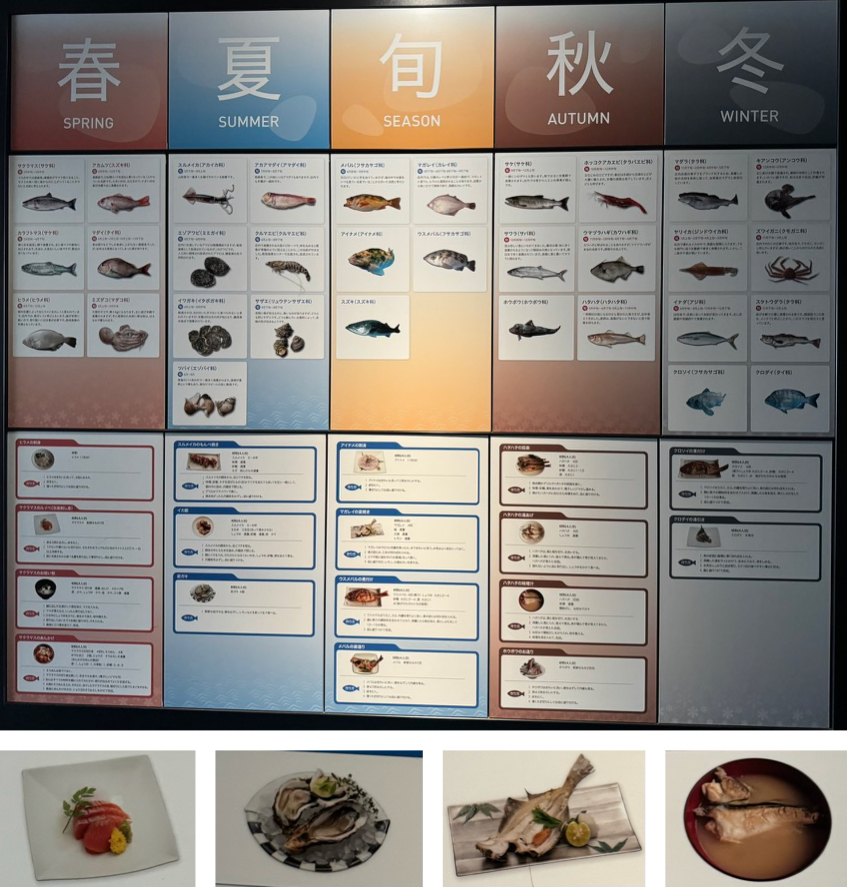
SDGs Aquarium Exhibit
There’s also a themed exhibit on marine life and garbage.
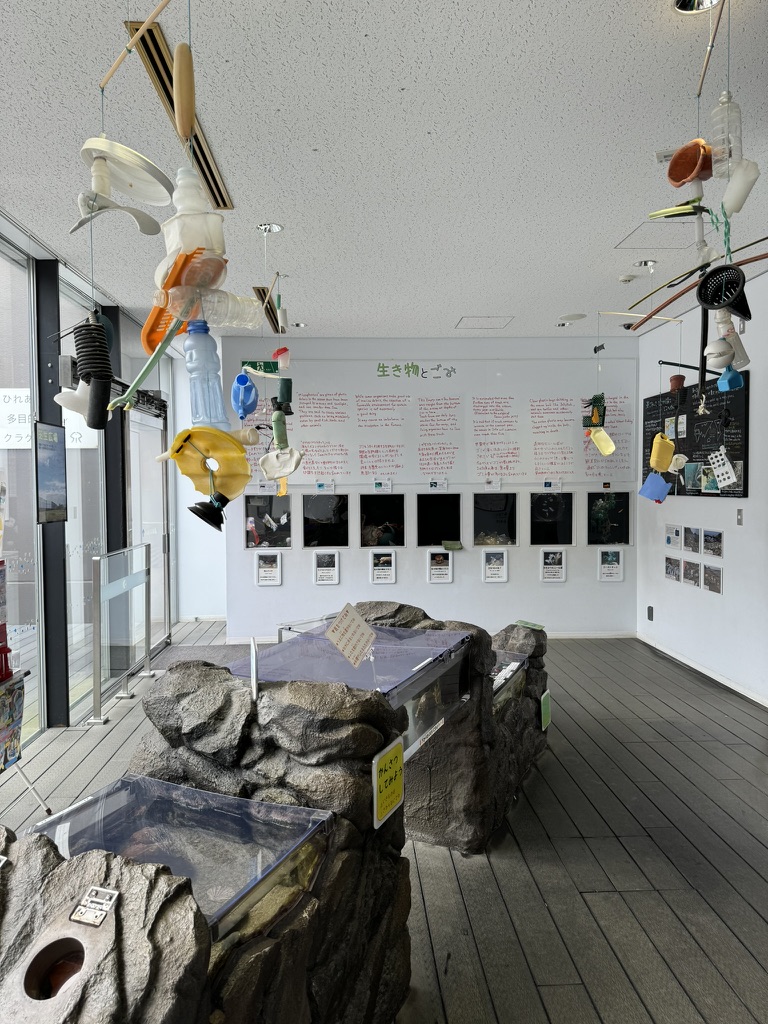
If I were a fish, would this be my view of the water’s surface?
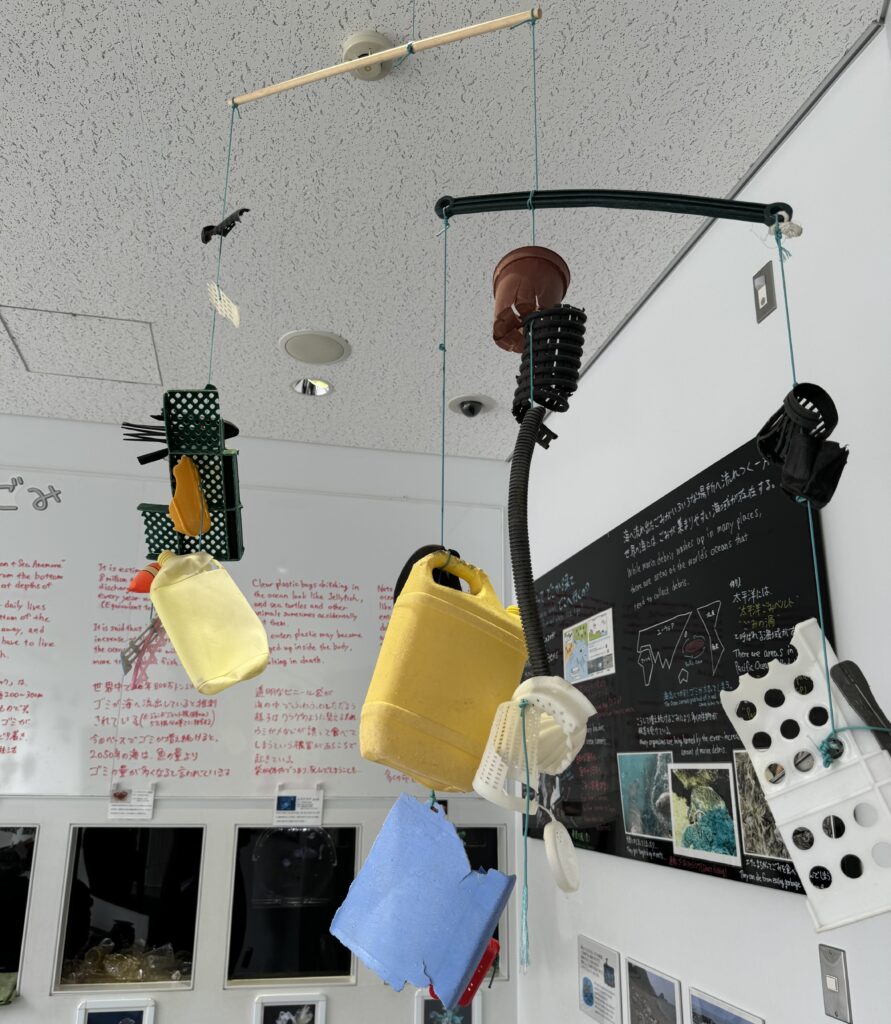
A crab under a plastic bottle elicited cries of “poor thing.” However, this situation may be common in the world’s oceans.
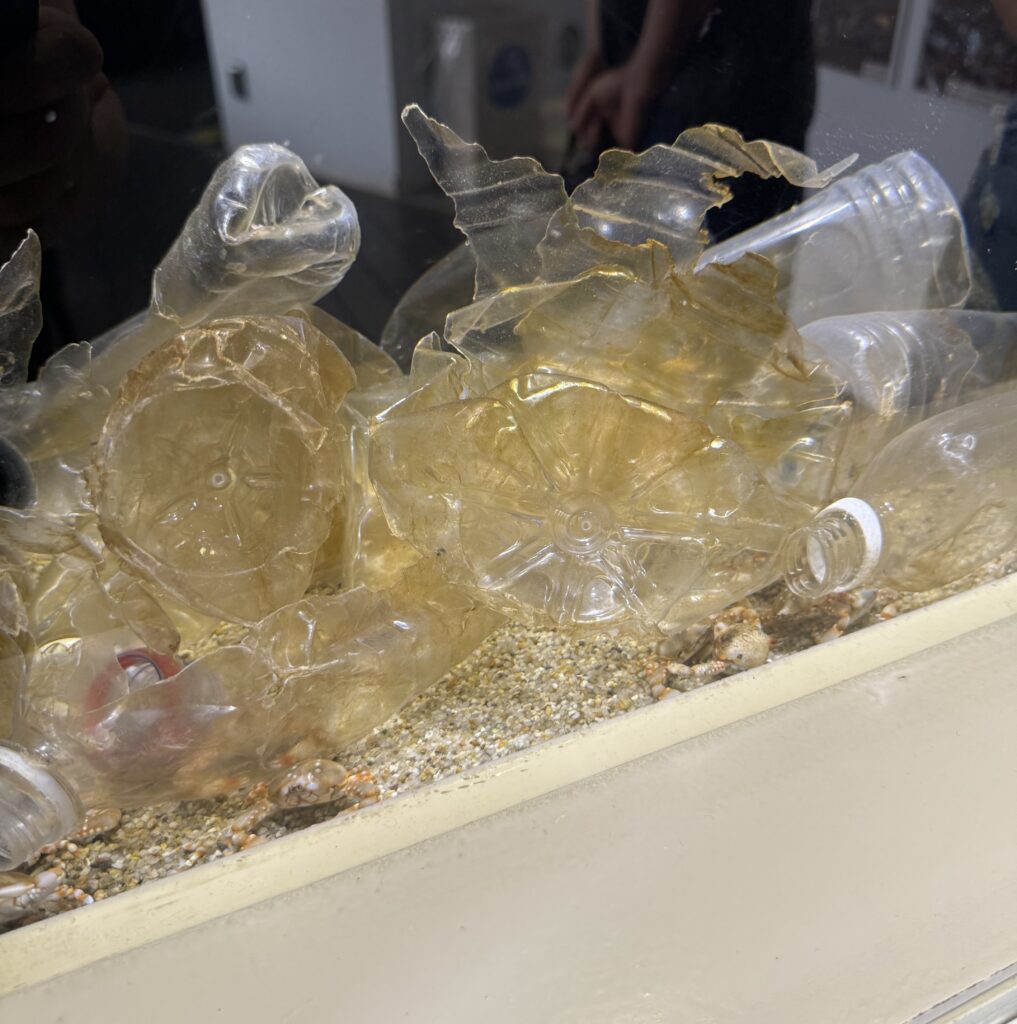
The World’s Largest Variety of Jellyfish
Moving past the marine debris corner, you’ll finally reach the jellyfish area. At the entrance to the jellyfish area, there was a board explaining how to read the information panels.
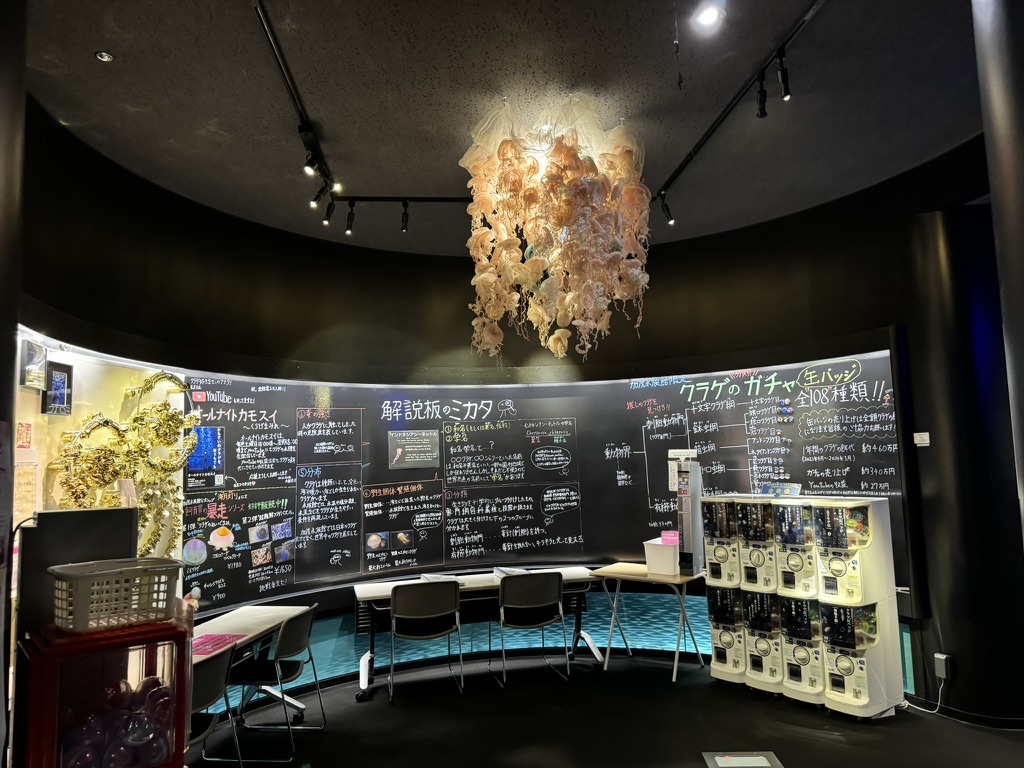
Information includes not just the Japanese and scientific names but also whether the jellyfish were caught in the ocean or born at the aquarium, and whether they are poisonous. I didn’t know that jellyfish eat other jellyfish, although this only applies to different species and is not cannibalism.
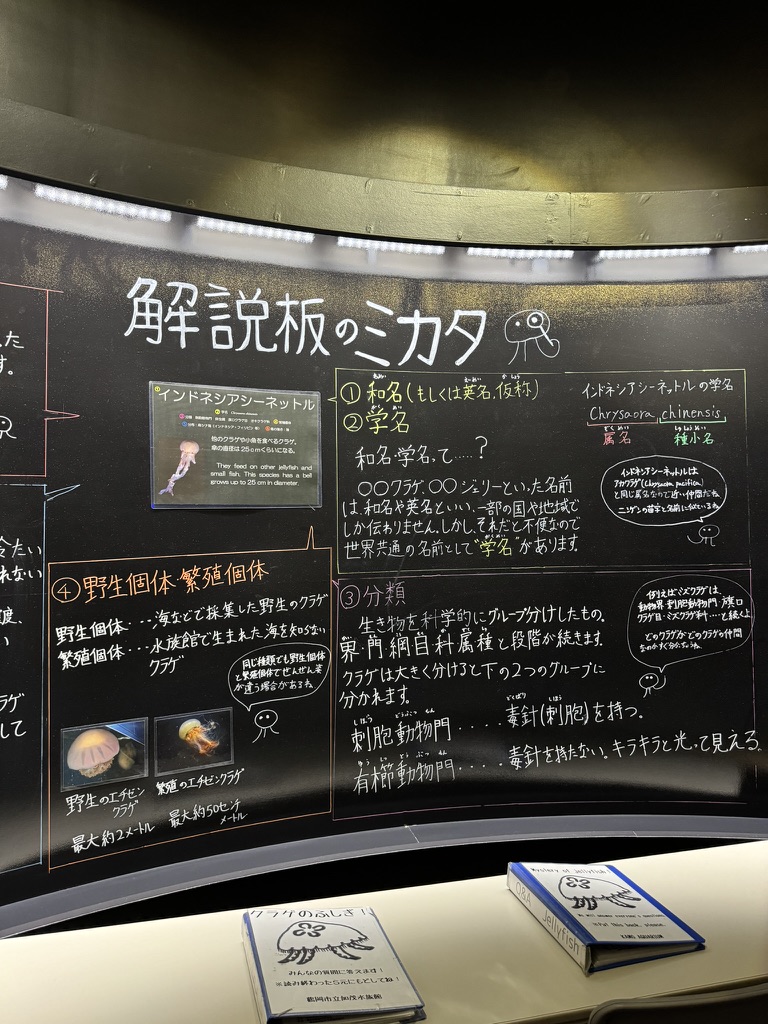
There are many types of jellyfish, including those with long arms, those that glow, and those that are orange or blue. The diversity is truly impressive.

Cannonball jellyfish. You can eat. Other edible varieties include the Echizen and Bizen jellyfish.
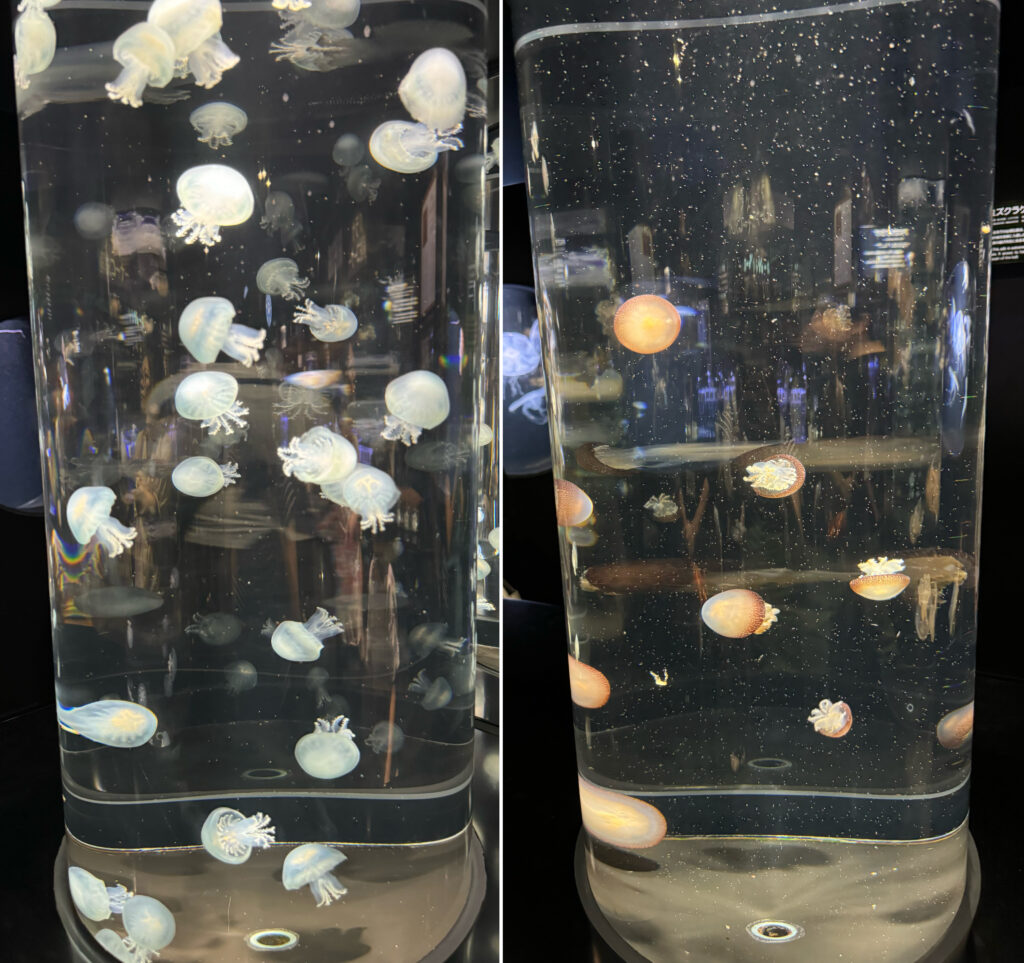
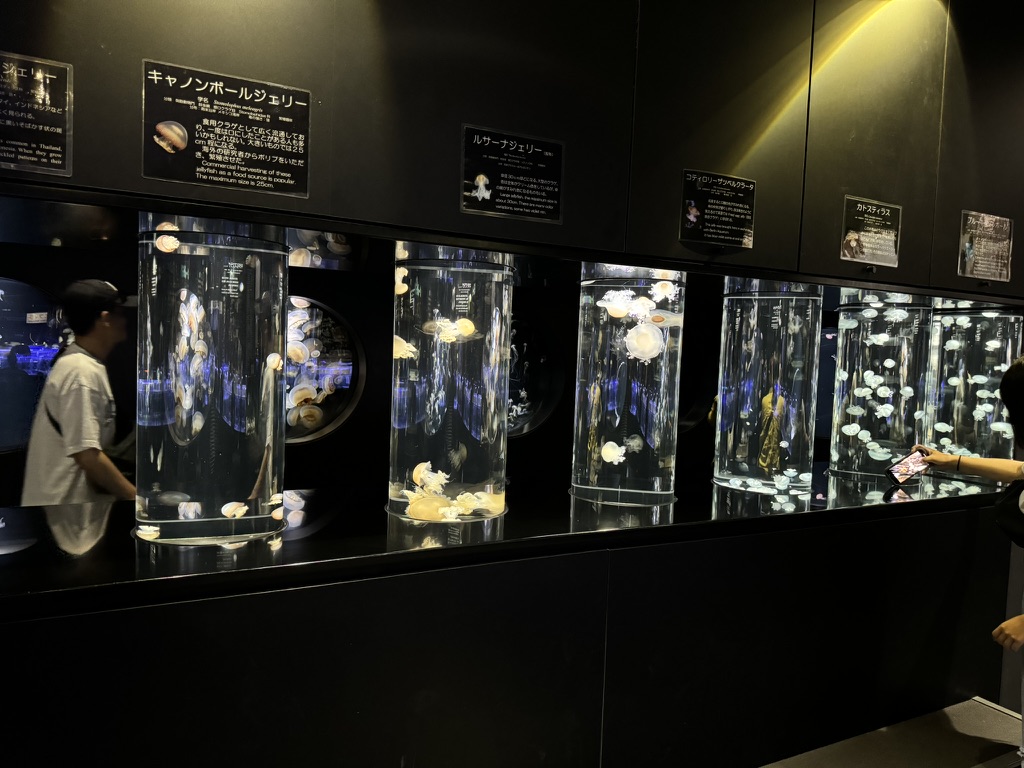
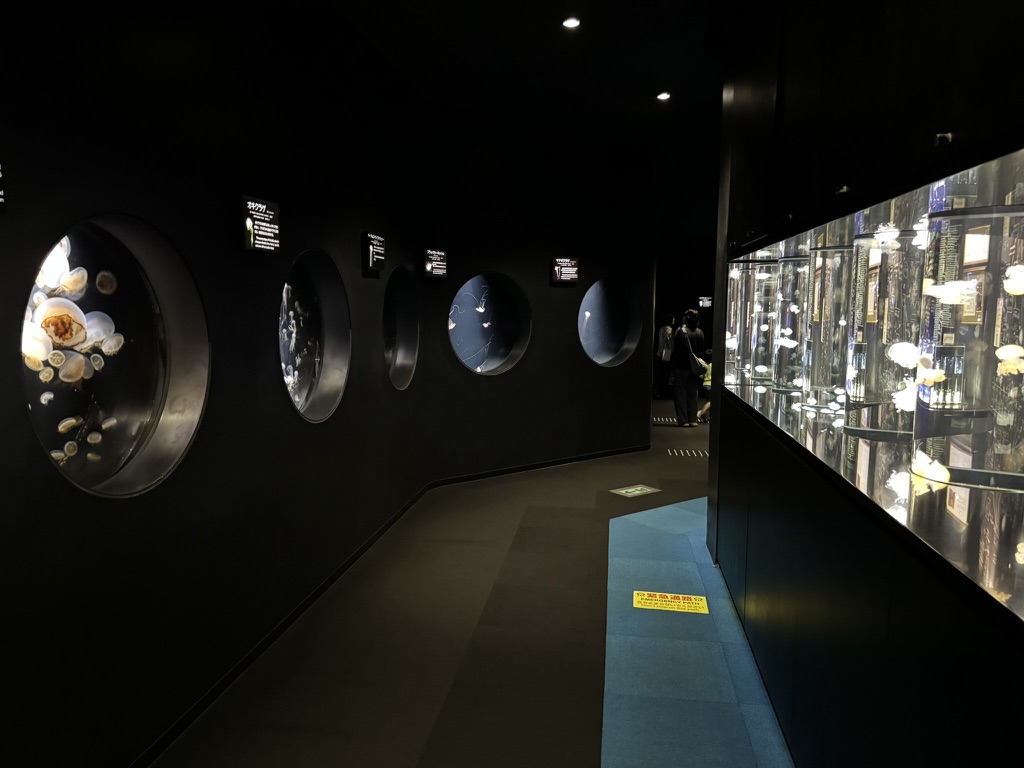

There are so many jellyfish that you might end up just glancing at them, but if you take a closer look at the jellyfish you like, you can lose track of time watching their movements.
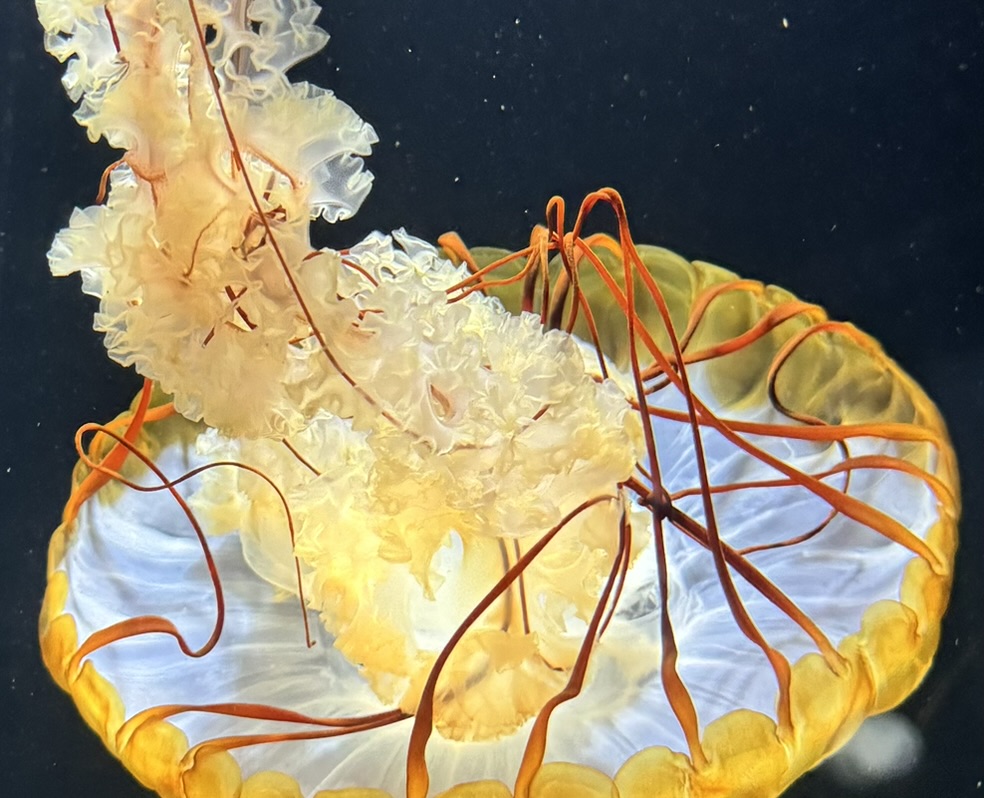
A large tank of moon jellyfish
The highlight of Kamo Aquarium is the giant moon jellyfish tank, measuring 5 meters in diameter (Jellyfish Dream Theater). Visitors are often surprised by the large tank. There are benches for a leisurely viewing experience.
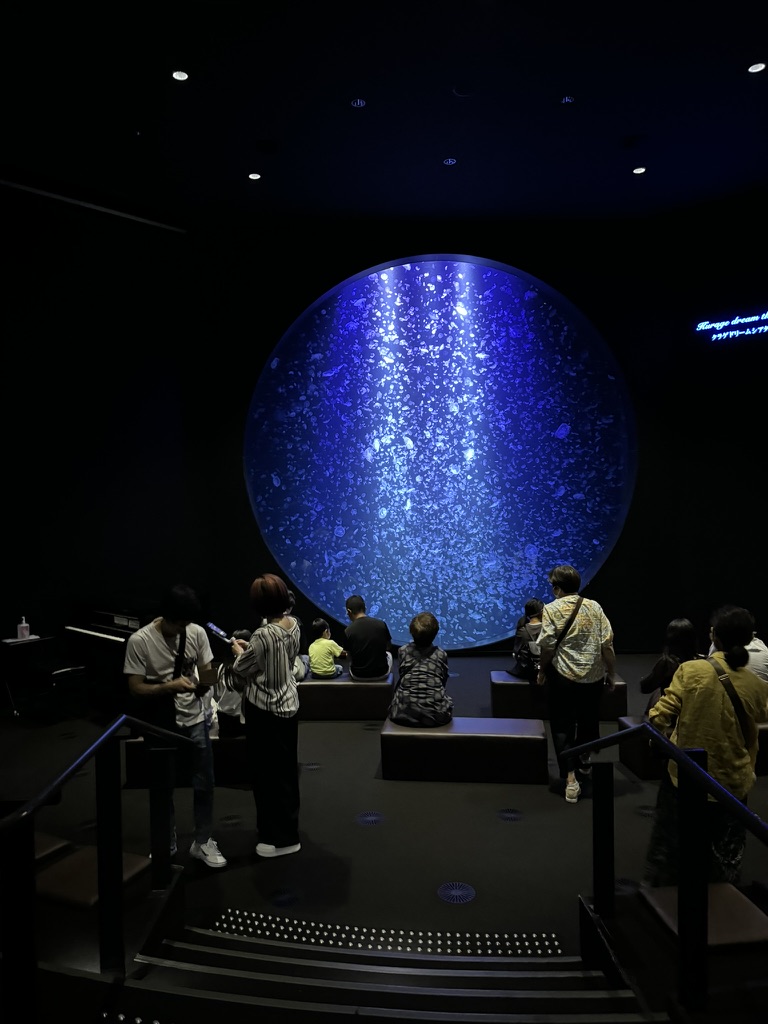
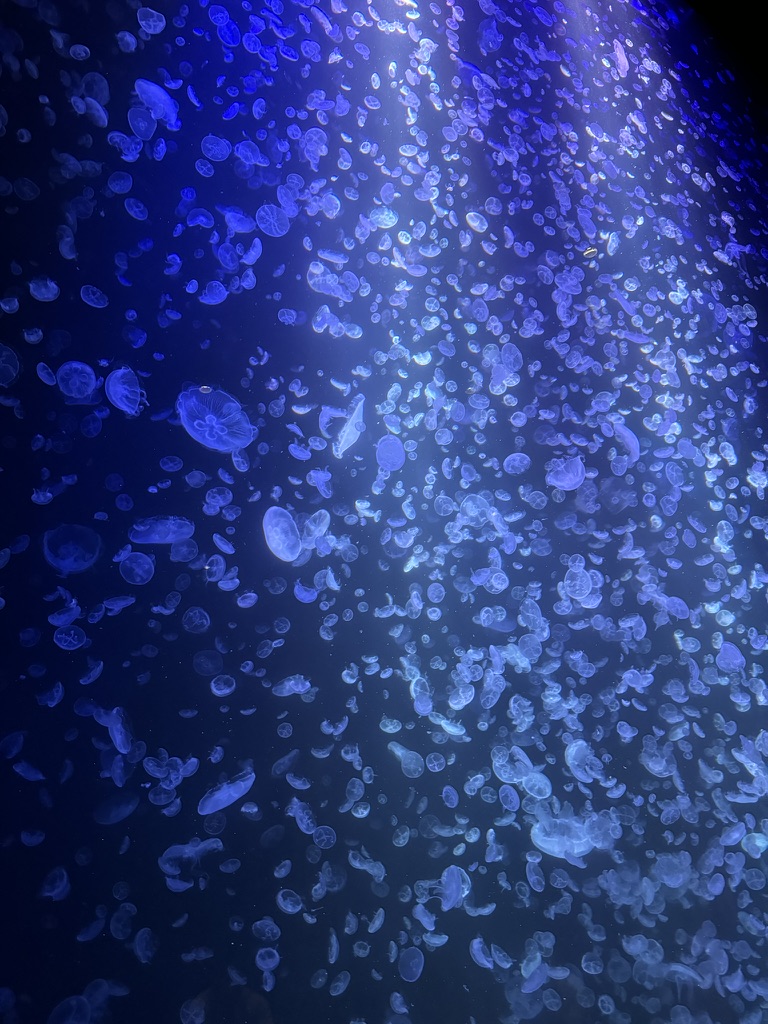
Experiences (Events)
Backyard Tour
The Backyard Tour requires a reservation and costs ¥500. It lasts about 20-30 minutes. Participants gather at the entrance at the designated time for the tour.
The first stop was the jellyfish research lab. Marine biologists from around the world have visited, and they left messages on the pillars.

You can observe jellyfish embryos (polyps) in great detail.

There are about 1.5 times as many jellyfish in the backyard as in the exhibition area. Throughout the tour, you can see the jellyfish up close, more vividly than in the exhibition rooms because the glass in the tanks is thinner than in the exhibit rooms. In some cases, there is no cover of tank.
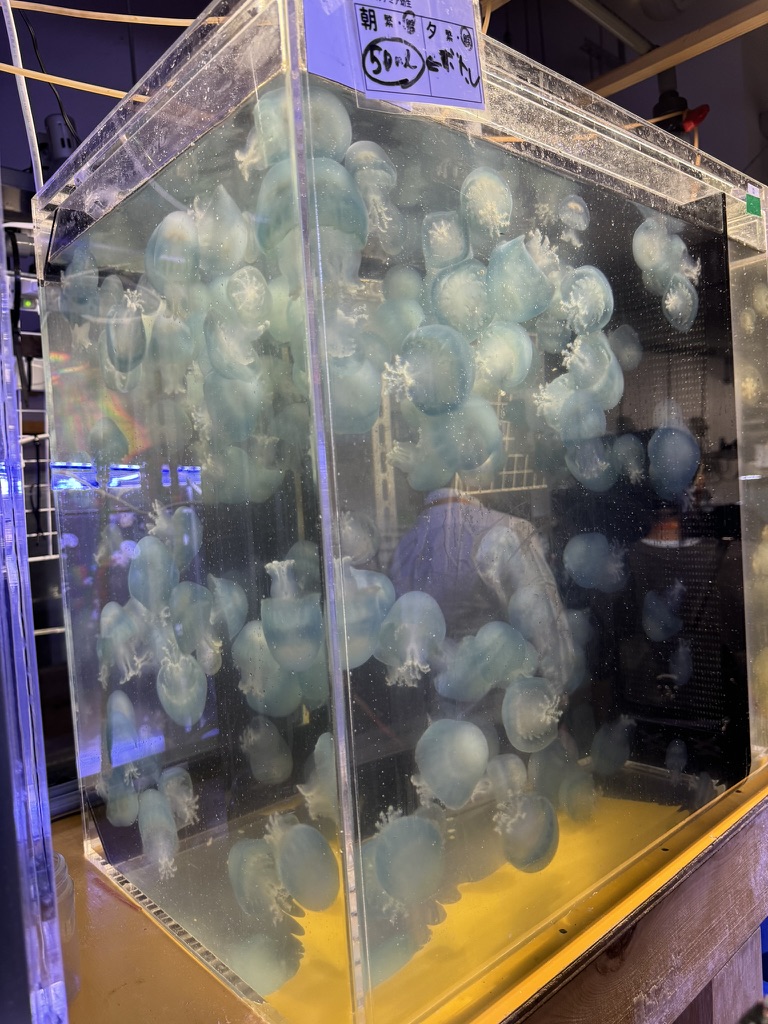
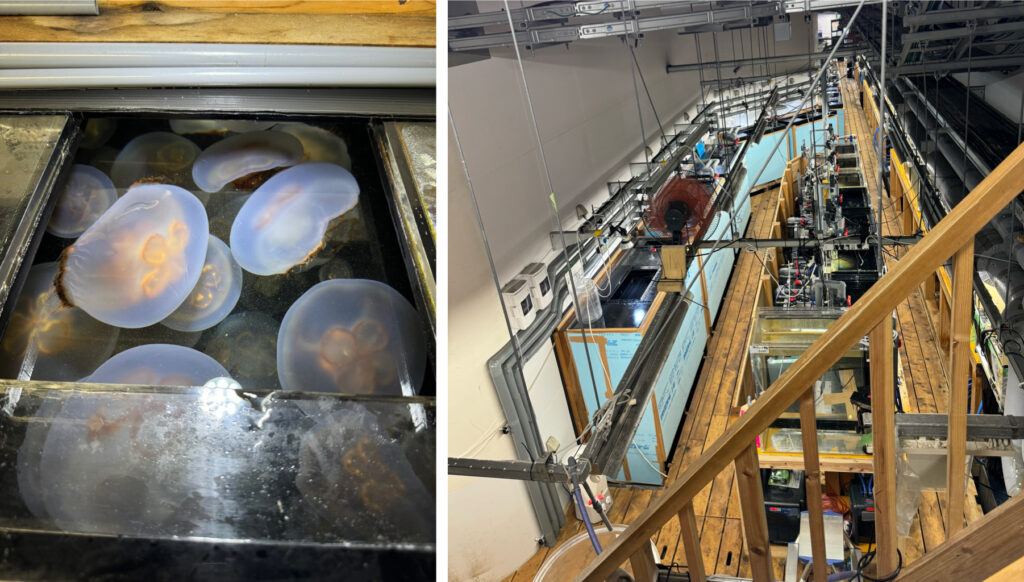
Jellyfish Talk
There is also a free jellyfish talk event conducted by an aquarium staff member. No reservation is needed. At that time, the staff member arrives and starts the talk. They explain how to distinguish between poisonous and non-poisonous jellyfish, how they eat, and how they reproduce. In particular, the reproduction method of jellyfish is unique.
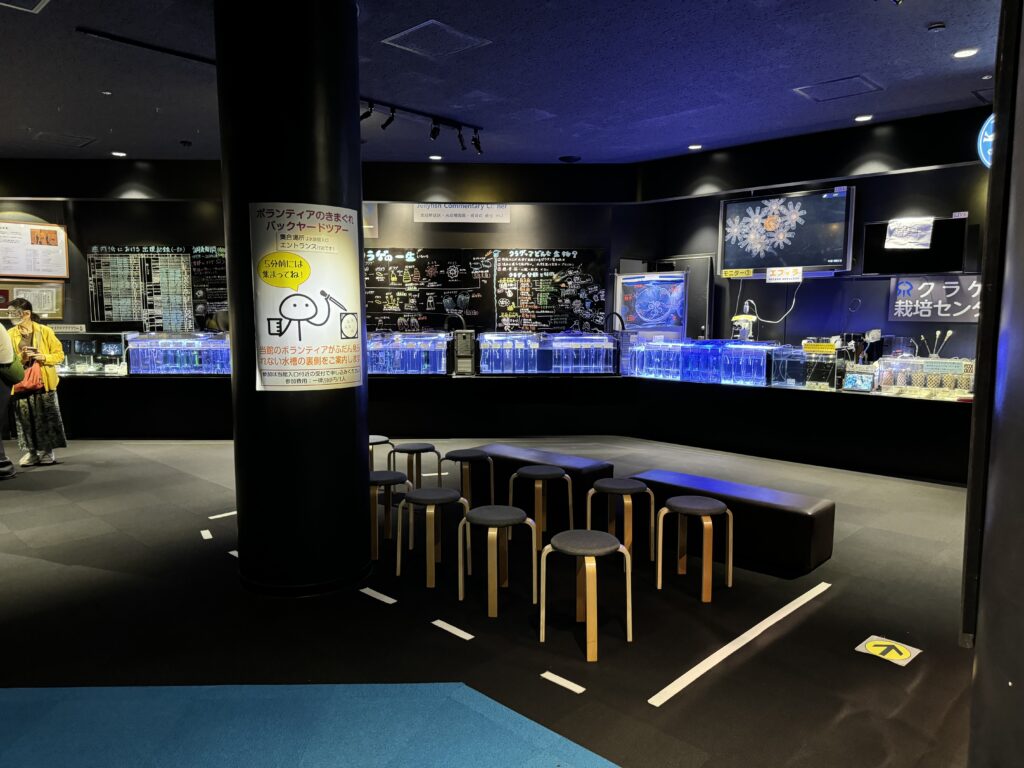

Although the talk is in Japanese, the jellyfish babies in the petri dish can be observed eating through a microscope connected to a large monitor.

Sea Lion & Seal Show
A sea lion and seal show is also held, with a feeding event at the end (for an additional fee).

Cafe & Restaurant
At Kamo Aquarium, you can try jellyfish dishes.
There are two places to eat: the cafe (Nami no Hana) focusing on sweets, and the restaurant (Okimizuki).
Cafe (Nami no Hana)
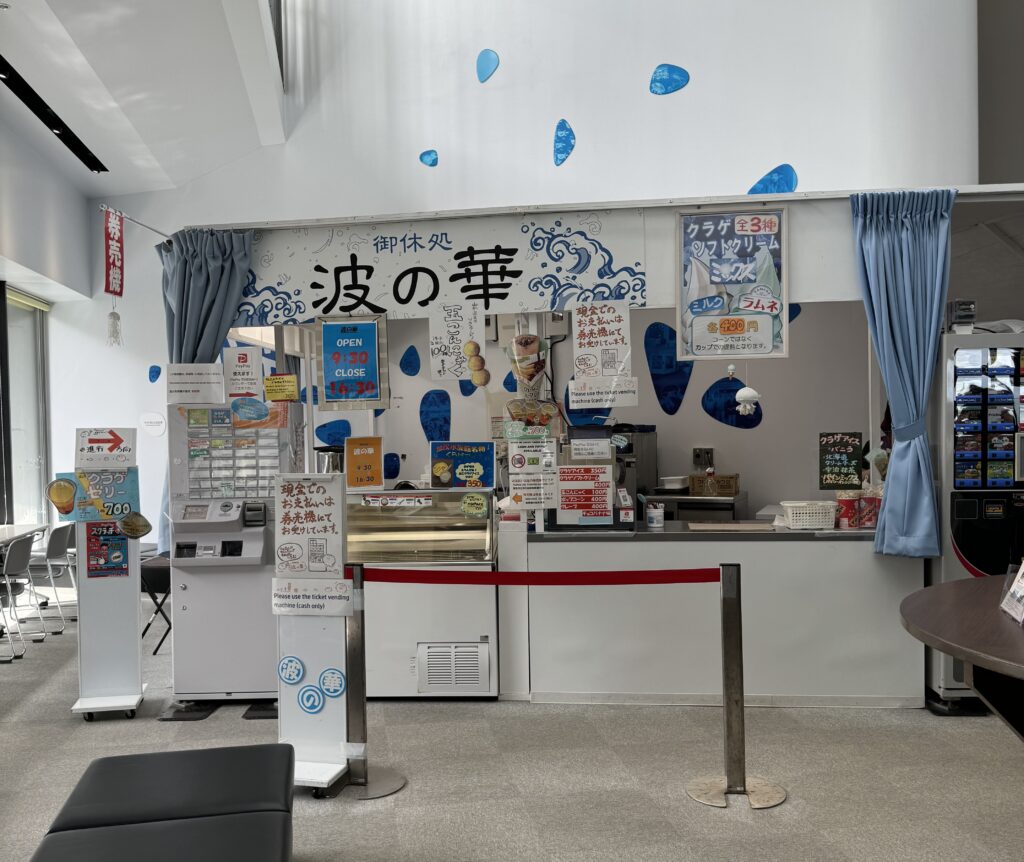
Here’s the jellyfish jelly (¥700). It was melon jelly made from melons grown in the Shonai sand dunes. The flavor varies by season. The top hemisphere is not jellyfish, but jelly.

As you eat, you’ll reach the jellyfish. The bottom right is agar jelly. The dish also includes melon and red beans, making it quite filling.
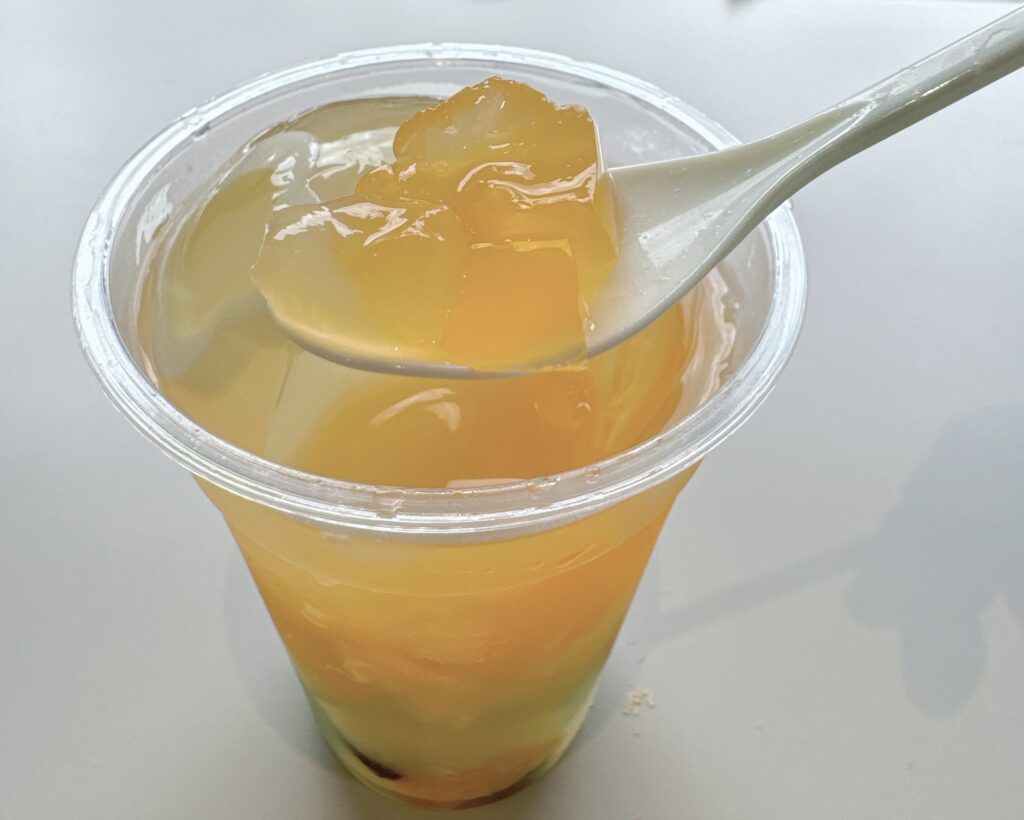
The jellyfish jelly offers three different textures: jelly, jellyfish, and agar. There’s a noticeable difference when you try them all. The jellyfish had a soft texture, like a softer version of tapioca. There was less jellyfish than expected, so rather than eating a lot of jellyfish, it was more about enjoying the different textures and the sweets.
Restaurant (Okimizuki)
Next is the restaurant Okimizuki. The main focus is on seafood, but there are also soba noodles, ramen, curry, and other dishes. The restaurant is through a corridor. Children’s chairs are also available.
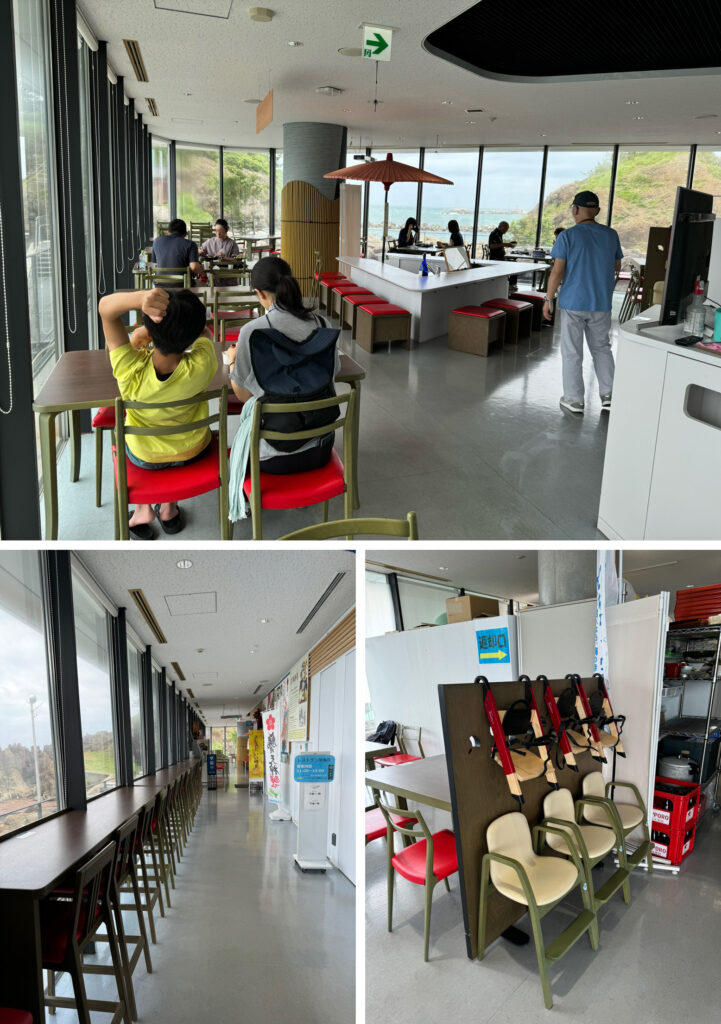
Initially, I planned to have the Japan’s Three Major Jellyfish Set, but the keeper who guided the backstage tour recommended the jellyfish ramen, so I changed my plan. When I asked why, he said the jellyfish set has so much jellyfish that you might get tired of eating it, while the ramen, the jellyfish retains its shape, allowing you to enjoy its appearance as well.
The jellyfish set indeed featured jellyfish sashimi, salad, and jellyfish in miso – truly a feast of jellyfish. It might be good for those who want to enjoy a lot of jellyfish.
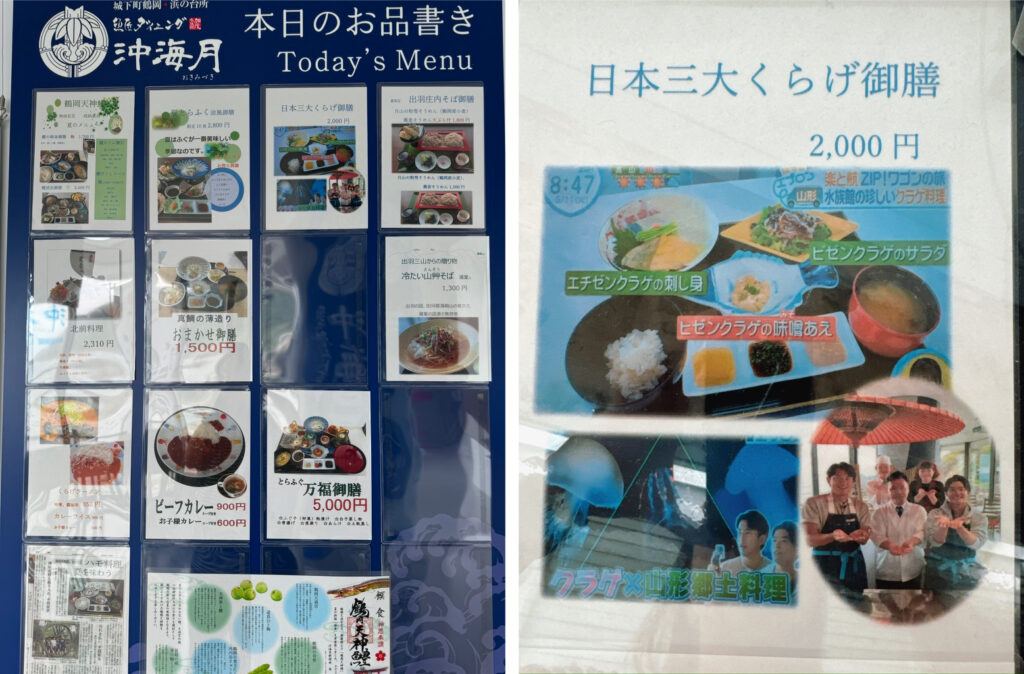
Left: Menu / Right: Japan’s Three Major Jellyfish Set
Here’s the jellyfish ramen. It comes in soy sauce and miso flavors: I chose soy sauce. It’s topped with jellyfish.
It might be the oral arms and mouthparts of the jellyfish? The texture was firmer than the one in the jellyfish jelly, perhaps due to the part of the jellyfish used or the type of jellyfish.
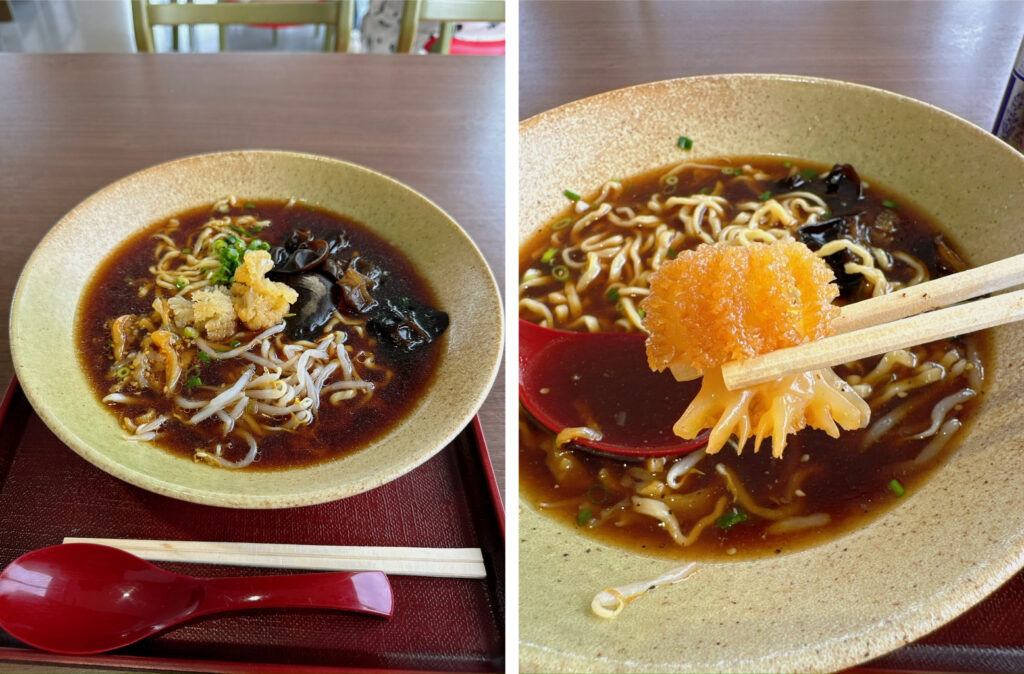
The view was excellent, making the restaurant worth it just for that.

Shop
Here’s the gift shop. They sold various jellyfish-themed items, including snacks, stationery, daily goods, and T-shirts.
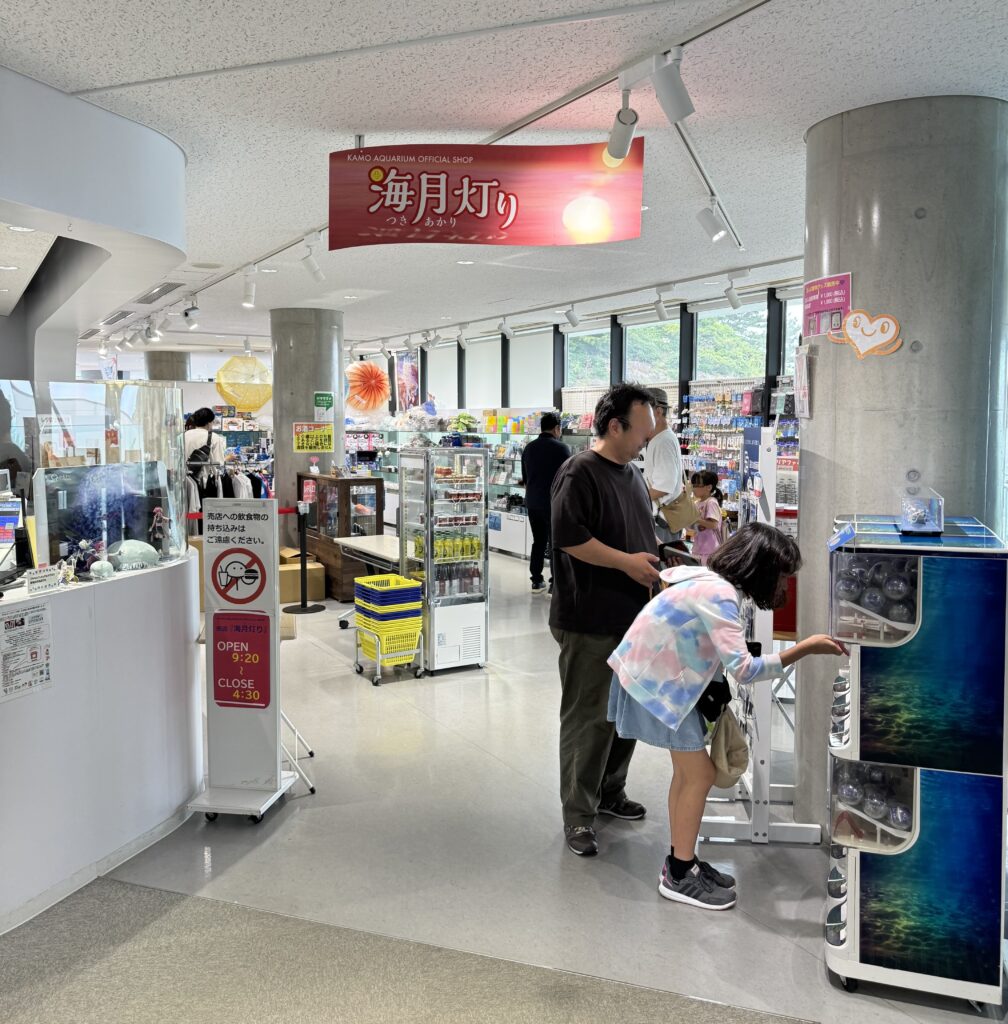

Others
Coin Lockers
The coin lockers are on the same floor as the entrance and exit, but they are tucked away and may be hard to spot from the main hallway. They are located just before the restrooms. There were also large coin lockers. Both require a 100-yen coin when depositing items, which is returned when retrieving your belongings. Don’t forget to take it back.

Busy Periods
The following dates coincide with special holidays in Japan, and crowds are expected. During these times, timed tickets are sold, allowing priority entry over regular tickets.
May 3rd – May 5th, August 11th – August 15th
Temporary Closure for Renovation
Please note that the facility will be closed from November 2025 to the end of March 2026 for expansion work. After the renovation, the number of jellyfish species on display is expected to increase from the current 80 to 100.
Conclusion
Kamo Aquarium is a jellyfish-focused aquarium, and you can sense its dedication to research and education through the various exhibits and events. While it is an educational experience, the gracefully drifting jellyfish are truly soothing. Why not visit and find your favorite jellyfish?
Kamo Aquarium Facility details
| Regular opening hours | 9:00 a.m. – 5:00 p.m. The reception desk closes at 4:00 p.m. Opened all year around (no closed day) |
| Address | 997-1206 Yamagata Prefecture, Tsuruoka City Imaizumi Okubo 657-1, JAPAN |
| WEB | https://kamo-kurage.jp/english/ |
